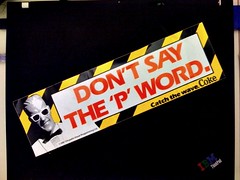 Image by The Rocketeer via Flickr
Image by The Rocketeer via Flickr

WEEKS ago, I was involved in an interesting discussion with an insurance executive. He said most people the best agent ever fails. The more the failure of a person, the more likely success. Usually people like that is like the worst ever experienced, or ever felt the deepest abyss and the dark.
Motivation to get up and huge success. In the spirit of steel, they moved like a high-speed locomotive. There is a small book, authored Richard Parson and Ralph Keyes. It's called crazy "Whoever makes the most mistakes wins" - who made the biggest mistake is usually a winner. Something that is very contradictory, is not it? Richard Parson is a doctor in psychology. He had been a naval officer and a lecturer. Ralph Keyes is the author of the groundbreaking.
They recommend that you motivate employees to do wrong. This method is called productive mistake-making. That makes mistakes productive. He cites a number of known cases of innovative companies, like Xerox and Polaroid. They are easily lost its hold on the imagination because of successes before.
Companies such as Coca-Cola rose from the grave just as big a mistake when launching New Coke. IBM is also resilient because once exposed to a number of problems, which forced him to reinventing. You may be scratching your head, and said that this theory is impossible. However, when you order, a number of events in this life it supported the mistakes we make. Richard Parson called the paradox of innovation. The bottom line, motivate people to productive mistake.
According to Richard Parson, mistakes usually occur accidentally. Opportunity to learn and innovate would be limited if only dating mistakes occasionally. Parson suggested that we systematically motivate employees to do one dive, so that innovation systematic and orderly way. Here the trick. Where there are bosses who rashly and heart to motivate his men to do wrong, not to succeed? Obviously very mad!
In his book, Keyes pointed Parson and John Wooden, basketball coach at the University of California Los Angeles, United States. During 27 years as coach, John had never lost any one season. He has led his team to win the prestigious championship trophy high antarperguruan sports (NCAA) for 10 times, including seven times in a row.
The technique is very unique to motivate the team. He uses a stance productive mistake-making. He asked his men to play all out. Win or lose, according to him, just a side effect. If a good game, winning becomes a natural process.
The same thing happened popular coach Phil Jackson, the LA Lakers. At first he was obsessed with winning as the end result. Through a number of religious experience, he changed. He said, success will happen when you have full awareness and unite with all the events around you. Same with John Wooden, he won just consider the side effects.
This method allows him to print the caliber player Michael Jordan, Kobe Bryant and Shaquille O'Neal. Phil Jackson became the most expensive basketball coach in history.
Motivating employees to systematically make mistakes it's a crazy idea. However, Parson and Keyes writes, successful and failed exactly the same as zen principles of light and dark matter. That success would not exist without failure. Failed there never will be if no success. We need both. Rather than a failure to load, and Keyes Parson suggested that we use the failures and mistakes, as the productive motivation.
![Reblog this post [with Zemanta]](http://img.zemanta.com/reblog_e.png?x-id=5a09fb76-61b8-424d-b7c7-5736a57e8d80)
No comments:
Post a Comment